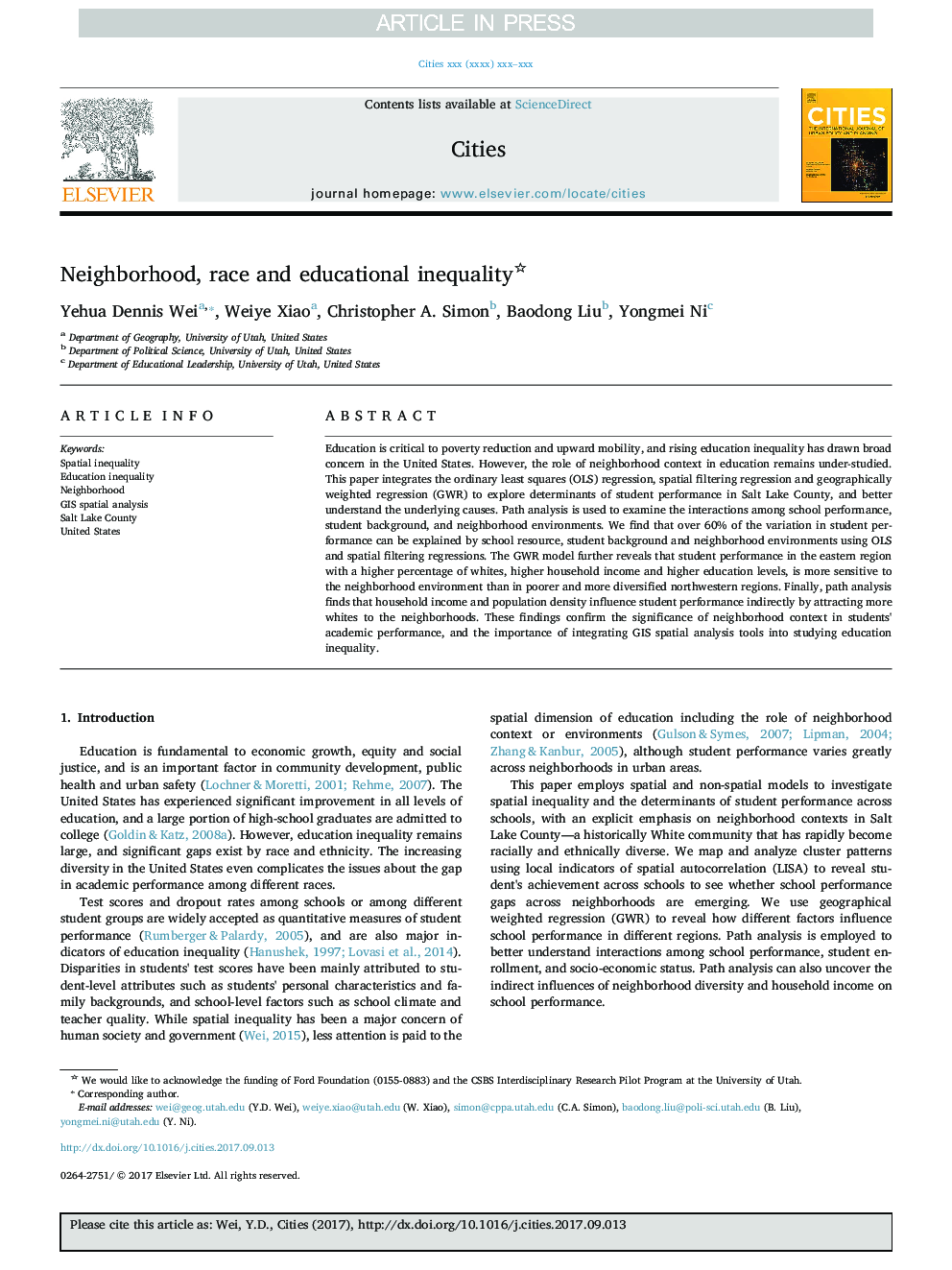| Article ID | Journal | Published Year | Pages | File Type |
|---|---|---|---|---|
| 7417636 | Cities | 2018 | 13 Pages |
Abstract
Education is critical to poverty reduction and upward mobility, and rising education inequality has drawn broad concern in the United States. However, the role of neighborhood context in education remains under-studied. This paper integrates the ordinary least squares (OLS) regression, spatial filtering regression and geographically weighted regression (GWR) to explore determinants of student performance in Salt Lake County, and better understand the underlying causes. Path analysis is used to examine the interactions among school performance, student background, and neighborhood environments. We find that over 60% of the variation in student performance can be explained by school resource, student background and neighborhood environments using OLS and spatial filtering regressions. The GWR model further reveals that student performance in the eastern region with a higher percentage of whites, higher household income and higher education levels, is more sensitive to the neighborhood environment than in poorer and more diversified northwestern regions. Finally, path analysis finds that household income and population density influence student performance indirectly by attracting more whites to the neighborhoods. These findings confirm the significance of neighborhood context in students' academic performance, and the importance of integrating GIS spatial analysis tools into studying education inequality.
Related Topics
Social Sciences and Humanities
Business, Management and Accounting
Tourism, Leisure and Hospitality Management
Authors
Yehua Dennis Wei, Weiye Xiao, Christopher A. Simon, Baodong Liu, Yongmei Ni,
